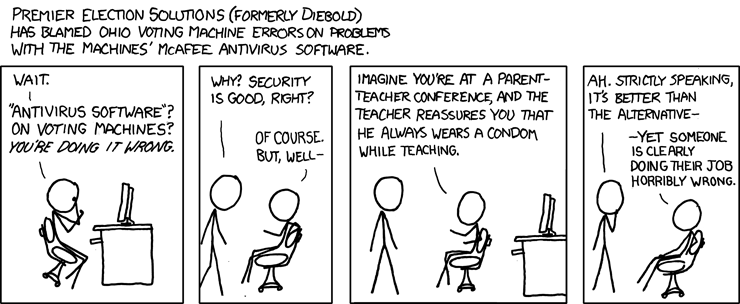
At a time when it's tough to get anyone to spend on new projects, perhaps the new administration's focus on economic growth through sustainable energy and infrastructure support will encourage more cities to invest in the growing bike kiosk programs that are popping up across the globe. Just recently,
AsiaOne Travel reported that Singapore is poised to adopt bicycle rental kiosks similar to the ones used in Paris. The kiosks are spread across the city, usually near bus and train stations and downtown hubs.
In Paris, a system called Velib, which was begun over a year ago, has been so wildly successful that the city needs to increase its supply of bikes. Demand is great: so far there are about 20,600 bicycles spread over 1,450 self-service rental kiosks.
A cyclist may pick up a bike from one kiosk and drop it off at another for subscription fees ranging from 1 euro (US$1.35) for a day to 29 euros for a year. Use of the bike is free for 30 minutes at a time, after which charges are imposed.
Here in the United States,
Washington DC became the first American city to use the bike dispenser kiosks (the fancier version is pictured above). While other American cities are seen as more “bike friendly,” with wide lanes on major thoroughfares, better safety regulations, and well, just generally more commuters who use bikes, DC hopes this new program will help it catch up. Not that it’s a competition, but cities with “greener” reputations (like Portland, OR) are looking to Washington to see how the kiosk-run program works. The SmartBike kiosks, which were created by outdoor advertiser Clear Channel Communications Inc. and deployed by the Washington, D.C., District Department of Transportation, allows people to rent a bike with the swipe of a membership or credit card. Clear Channel provides Washington with the kiosks in exchange for the right to advertise in certain public areas, such as on bus shelters. According to
ClearChannel’s spokesperson, the business model pays for all of the capital and the ongoing operating expense for the bike sharing program, which offers more long term funding than federal grants.
Although Clear Channel was one of the companies proposing kiosks for Portland, right now the ambitious plan for a
500-fleet set of bikes and kiosks is on hold while the city’s officials debate feasibility issues.
Meanwhile, the D.C. Transportation Department has been slowly striping more bike lanes through the city's streets. Currently there are about 25 miles designated for bikes; an additional 11 miles are in the works this year (which is only a small swath of roadway compared to many other cities). Washington’s program also has some advantages in terms of theft prevention – the Velib program in Paris has lost over 3,000 bikes so far (they have even turned up in Australia, according to some reports). People in Singapore are highly skeptical that the system will work there, given the already huge rate of bike theft and the general lack of police enforcement. In comparison, the DC bikes have a radio frequency device that allows them to be tracked. The advantage of kiosk use is also clear here: people who don’t return bikes can be charged via their credit cards.
Now seems to be the right time to promote programs like this, a perfect blend of high technology, sustainable environmental programs, and infrastructural support. And, well, cool bikes in futuristic-looking kiosks. How much more forward thinking can we get?
 Now, with the financial world still on shaky ground, some people perceive a market for kiosks for gold exchange. The New York Times recently highlighted a new line of vending kiosks marketed by TG-Gold-Super-Markt which will allow people to purchase one to ten gram pieces of gold. The first of these new "gold dispensing machines" appeared in Frankfurt this month. The company plans to install more in airports and railroad stations across Germany (its home base), eventually branching out to Switzerland and Austria, according to a Financial Times report. The current model, with the name "Gold to Go" is nothing more than a big gold box, but it does have video surveillance and up-to-date pricing. These may never become as commonplace as your standard ATM (although wouldn't it be interesting if your standard ATM could do a bit more?), but perhaps the design will improve as people become used to purchasing security in little nuggets rather than in crisp bills. The Gold Rush has never been more contemporary -- or dull looking -- as it is today.
Now, with the financial world still on shaky ground, some people perceive a market for kiosks for gold exchange. The New York Times recently highlighted a new line of vending kiosks marketed by TG-Gold-Super-Markt which will allow people to purchase one to ten gram pieces of gold. The first of these new "gold dispensing machines" appeared in Frankfurt this month. The company plans to install more in airports and railroad stations across Germany (its home base), eventually branching out to Switzerland and Austria, according to a Financial Times report. The current model, with the name "Gold to Go" is nothing more than a big gold box, but it does have video surveillance and up-to-date pricing. These may never become as commonplace as your standard ATM (although wouldn't it be interesting if your standard ATM could do a bit more?), but perhaps the design will improve as people become used to purchasing security in little nuggets rather than in crisp bills. The Gold Rush has never been more contemporary -- or dull looking -- as it is today.







 Most Netflix users I know can't say enough good things about the service. Cheaper and easier than going to the video store, and with a much -- MUCH -- wider and deeper selection of titles to choose from, it comes highly regarded by video novices and serious movie buffs alike. So it's funny to think that in spite of this a little DVD rental kiosk that can only stock a hundred or so titles might be the thing to take the company down a peg.
Most Netflix users I know can't say enough good things about the service. Cheaper and easier than going to the video store, and with a much -- MUCH -- wider and deeper selection of titles to choose from, it comes highly regarded by video novices and serious movie buffs alike. So it's funny to think that in spite of this a little DVD rental kiosk that can only stock a hundred or so titles might be the thing to take the company down a peg.














 Talk about brand extension....
Talk about brand extension.... 
 Subscribe to this blog
Subscribe to this blog